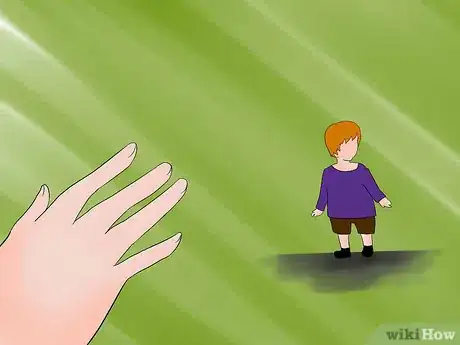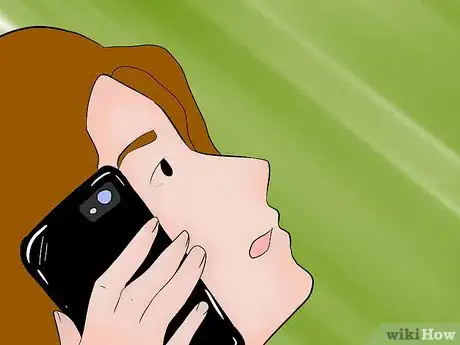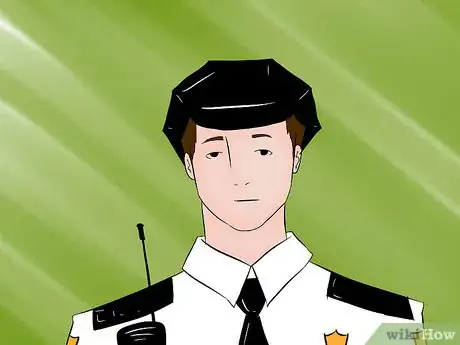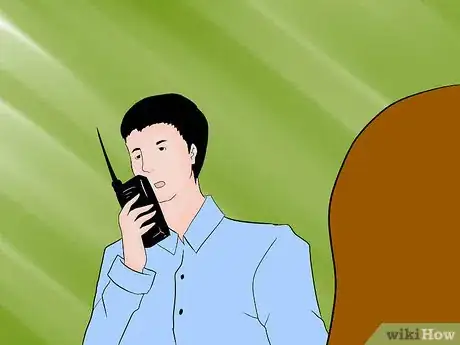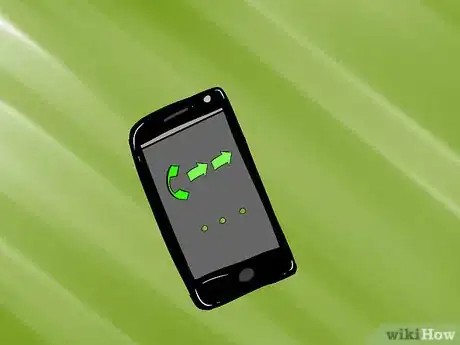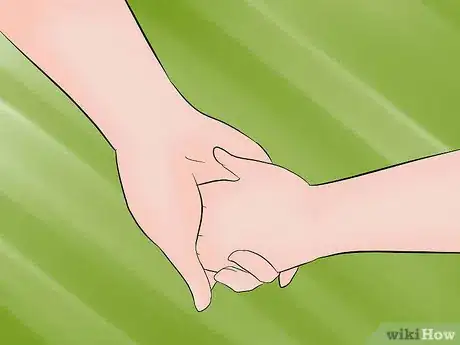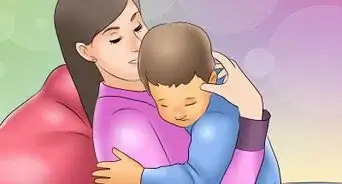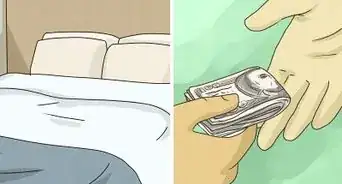wikiHow is a “wiki,” similar to Wikipedia, which means that many of our articles are co-written by multiple authors. To create this article, volunteer authors worked to edit and improve it over time.
This article has been viewed 17,724 times.
Learn more...
Malls are big and fascinating; sometimes a child gets inquisitive enough to wander off and check out something without notifying you. Finding your little rascal or dear before your heart drops into your stomach requires fast action and quick thinking. Assume the best to begin with and do a check in your actual area; if that proves fruitless, then start searching with the help of others.
For the child who is playing about
This section should not take you more than two minutes. If it feels too long, move to Part 2.
-
1Determine whether out if the child is actually lost. Children have really playful natures and malls offer lots of opportunities to have some fun. Have a look around the immediate vicinity, calling the child's name. He or she may just be around the corner playing with whatever they could get their hands on. Sometimes they may even hide from you for fun.
-
2Think like a child. Your child may have just wandered to a near by candy or toy shop so always check there. If you check stores, tell the employees their about the missing child so they can keep an eye out.
-
3Look low. Look behind clothing racks, shelving, the back of displays, under chairs and behind things. Many children love hiding, while others are attracted to fascinating displays and try to "get inside" them or play with them.
-
4If you spot your little monkey hiding from you, call your child and perhaps offer a lure such as some candy or even a toy. Sometimes, pretending to go home and saying "bye bye" can do the trick for the very young, causing them to come running out screaming not to be left behind.
-
5Talk to your child about what just happened. Once you find your kid, remember to tell him or her to not run off like that again, and to always stay within your view. He/she may even listen if you reward him afterwards.
- Don't make a scene. You may be understandably upset but yelling and screaming at your child will terrify, not teach them. Keep calm and stay close with your child until you are able to speak calmly.
If your child is actually lost
-
1Get help quickly. After doing a quick look around (see Part 1) and not spotting your child, assume that quick action is needed. The first three hours after a child goes missing are vital in finding a child should anything untoward have occurred.[1]
-
2Ask a mall security guard, mall employee or mall/store manager for help. Someone at the information kiosk or central management can speak on the loudspeaker to get your child's attention. Be prepared to provide a description of the child's clothing, hair color, eye color and anything else. Give the child's name, and any nickname that he or she prefers to be called by; this may not be called out to protect the child but it will be helpful to those in the actual search. The child's age will also be needed.
- Show a photograph of your child on your cellphone or a real photograph from your purse or wallet.
-
3Try to recall if your child tried to go or talk to someone earlier. Go back to any places where you remember your child talking to someone or seeming very interested in what a person was doing. For example, if your child was fascinated by people putting up a window display or showing a smartphone to customers, these might be the stores to go back to and check again.
- Ask the mall security staff to check all of the toilet facilities in the mall.
-
4Let mall search staff know if you decide to keep searching off your own bat. They will need to know how to reach you (cell phone number) and that you aren't missing too. If they ask you to stay put, heed their advice. They are not obstructing you; they're trained in what to do and it may be best that you're available for questions and to be there when they bring back your child to you.
-
5Thank the staff for the help when your child is found. While few people resent stopping to help find a lost child, it shows respect and appreciation to thank them for their help.
-
6Call the police if the child does not turn up. Ask the mall staff to assist if needed; they will likely need to talk to the police anyway and many malls likely have a police alerting protocol in place after a set period of time searching.
- Contact your spouse and any relevant caregivers to assist at this stage. You will need support and may not be in a fit psychological state to be left alone.
An ounce of prevention is a pound of cure
-
1Talk to your children about safety when shopping and going out. They are never too young to learn how to stay safe.
-
2Develop a plan of what to do if they get lost. A child who knows and has practiced what to do upon getting lost. This involves making a plan together, choosing go-to spots in the event of getting split up and teaching your child to stay put at such a location. It isn't enough to talk this through; also act it through at least once every few months, to be sure that your child knows what to do and where to go.
- In a mall, this might be a particular store, where a security guard is stationed, or the information kiosk. Only send your child to a location where you know you can trust the staff.
-
3Never let your child be by him/herself and always keep them in your eye view. You may even purchase or make safety helpers, such as:
- Child-safe leashes to put around children's hands.
- Temporary tattoos with phone number, contact details of parents or caregivers, placed on the child's arm. These are great for crowded places such as malls, Disney locations, game stadiums, theme parks, etc.
- Pinning contact details to the child's clothing. Or, simply write the contact details on your child's hand with a safe marker.
- Using digital technology, such as a tracking tag (worn like a watch) or similar device.
- Dress your child in bright clothing for ease of spotting.
Warnings
- Never leave your child alone. If you find it hard to keep a watchful eye on your child, bring along someone else responsible to help you either with the child or the shopping. Better yet, have a babysitter care for the child at home until you've finished with the shopping, ensuring sanity for the two of you.⧼thumbs_response⧽
- Do not entrust a stranger with your child. If, for any reason, you need to leave your child with someone in an emergency, go to the mall's central management and ask for help.⧼thumbs_response⧽
- Teach your child to alert you or other people around them whenever he or she feels uncomfortable about someone. Teach your child to call out or shout if someone scares them, hurts them or tries to take/drag them anywhere. A suitable phrase would include something like: "You're not my mommy/daddy!" or "I don't know you!".⧼thumbs_response⧽
- Some places are safer than others; the amount of caution required where you live is dependent on many things, such as local culture, size of the population, etc. Only you can be certain of these things through local knowledge and awareness.⧼thumbs_response⧽




